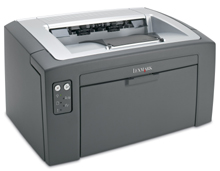
I’ve really been getting into podcasts in the last few weeks.
This epiphany has come about for two reasons:
– I got my iPod’s battery replaced ($US46.99 including return shipping from USA which equated to $A70… a $30 saving on the Apple service) so now I have 12 hours of playback time again rather than half an hour, and;
– I moved out of my house in Rozelle so I now have a slightly longer bus-trip home. Living in Rozelle I was getting off the bus before I got on it in the city, so I never had time to listen to podcasts.
However, I’m finding that the only podcasts that are really worth listening to are those produced by professional broadcasters. There’s some terrific ones at the ABC:
– AM
– PM
– Enough Rope [you can also watch online now]
– Background Briefing
– All in the mind
– The Health Report
– The Law Report
– The Media Report
– Life Matters
And outside of the ABC, Tony Martin’s Get This podcast is very funny.
However, some of the amateur ones are just abjectly terrible.
According to iTunes, Linux News Log Podcast is the most popular podcast about Linux. I listened to the latest episode (#94) and gave up after three minutes, at which point the host hadn’t said anything about Linux yet. In fact, it was so bad I feel compelled to offer this transcript of the waffle:
The Linux news log podcast episode number 94, for Tuesday, the 4th of July, 2006. Welcome to the show everybody.
Linux newslog. Your source for Linux and open source news on the net. L-l-live to the hard drive from Phoenix, Arizona.
Linux newslog is a proud member of the tech podcast network. If it’s tech, it’s here. [Some metal music]
Hey hey everybody, how’s it going. You are listening to Linux newslog, I am your host coming to you almost live from Phoenix, Arizona, here in studio BR 2. This is the fourth of July, can you believe it, huh? The fourth of Ju—-ly.
And I’m here at home doing a podcast. Well, partially because I don’t like going out when there’s lots of opportunity for other people to be complete idiots, and here in the states, if you’re not from the US, here in the United States, the fourth of July everybody is out being drunk being an idiot.
Almost everybody. Anyway. A significant proportion of people, so, the safest thing to do is to stay home which I am doing right now and conversing with my lovely audience here in studio BR 2.
I have, uh, it’s been a while since I put a show out, partially because I have been reloading my computer, um, disaster has struck again, so, um, yeeeesh, that’s been goin’ on, everything is fairly back to normal, so we’re back to recording and doing the podcast.
Also, while I’ve been redoing things I’ve decided to change things up a little bit in how I do the show. It’s now 32 bit sample rates floating point, and uh, 192KHz per second sample rates. No, it’s 32 bits sample bits, the sample depth is a 32 bit float, and the sample rate is 192KHz per second.
It sounds a little different in my headphones, it’s quite a bit clearer than before… I thought 96KHz was clear; this is incredibly clear… uh… and quite a significant bump in the noise floor and just the depth and clarity, it’s incredible, it’s like I’m talking to myself, into my own ears.
To me, that last sentence said it all.
I’m sure this will offend the host Adrian Bacon, but it’s not intended to. I’m sure his podcast is great. It’s the most popular Linux podcast on iTunes after all. It’s just that I couldn’t be bothered ploughing through the waffle up-front to hear whether what came later was any good.
I’m a huge proponent of the web as a self-publishing medium; that’s how I got my start in journalism, but I reckon the difference between written blogs and recorded podcasts is that it’s easy to skip over the boring stuff in blogs, but you can’t do that as easily on the bus while listening to a podcast.






 MacWorld in the US has posted a
MacWorld in the US has posted a